
Mahindra BE 6e First Drive Review: Pure Insanity!
- Dec 4, 2024
- Views : 1698

Many a time I have been to the gates of supercar heaven and have always been richly rewarded. Yes, I know the almighty has been kind to me and I thank him every moment of my existence here. On my previous visits, I did get to sample and experience small bits of the sanctum sanctorum and it was both amazement and obeisance which followed me to the hallowed industrial district of Maranello where the Prancing Horse is stabled. This time round it was much more of the same but there was more to reveal, more exploratory stuff within the confines of the Gestione Sportive (no, not the F1 set-up but the equally impressive Corsi Clienti) along with well laid out visits to the V8 assembly line, the Ferrari design centre (Centro Stile to give it its exact calling) and also Ferrari Classiche.
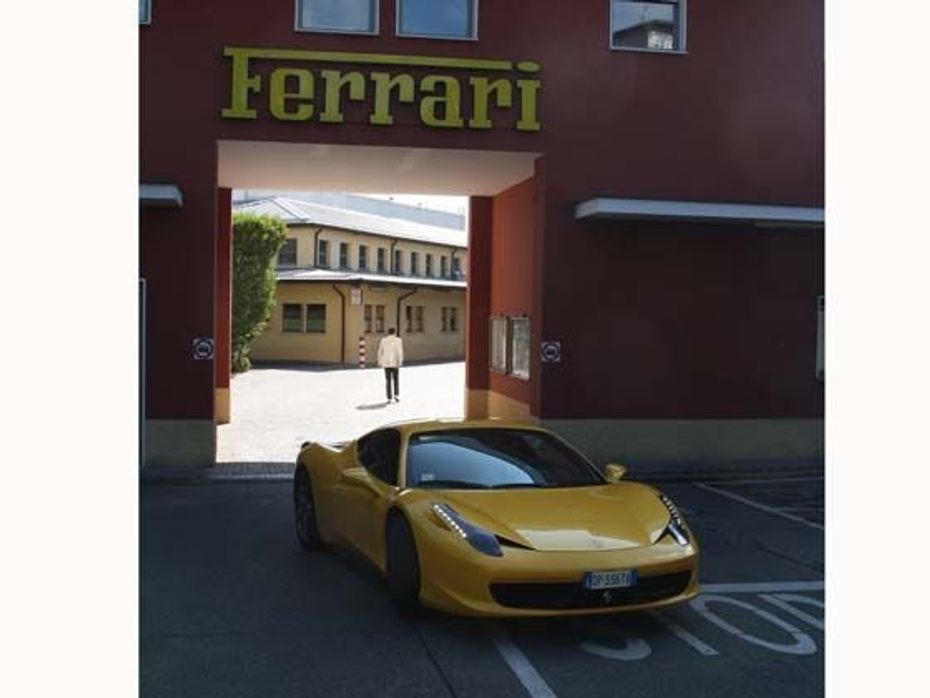
When you have these many goodies to soak in and digest, what better dessert could there be than another great feast in itself? A no holds barred five-hour drive in the latest Ferrari over a 450km route in and around the hills dotting Modena was the feast laid out and to a dyed-in-the-wool Ferraristi, there could have been no better terrain to put the latest Prancing Horse through its paces. The last time I got to drive a Ferrari from Maranello, it was the 612 Scaglietti some four years ago and the procedure was the same – arrive at the main doors of the Ferrari plant on Maranello’s via Abetone 12, meet up with the product communications team which will give you a run down on the car and then tell you to get on with it. The difference this time was that the Ferrari on this occasion was a proper mid-engined two-seat supercar driving the rear wheels as against the front-engined, rear-wheel drive 612 gran turismo. Different cars with different charms but both undoubtedly carrying on the lineage since Ferrari founder Enzo rolled out the first car carrying his name – the 125 in the mid-1940s. Since then every new Ferrari is eagerly awaited and like each and every one to roll out of Maranello, is a joy to see, drive and take to its limits.
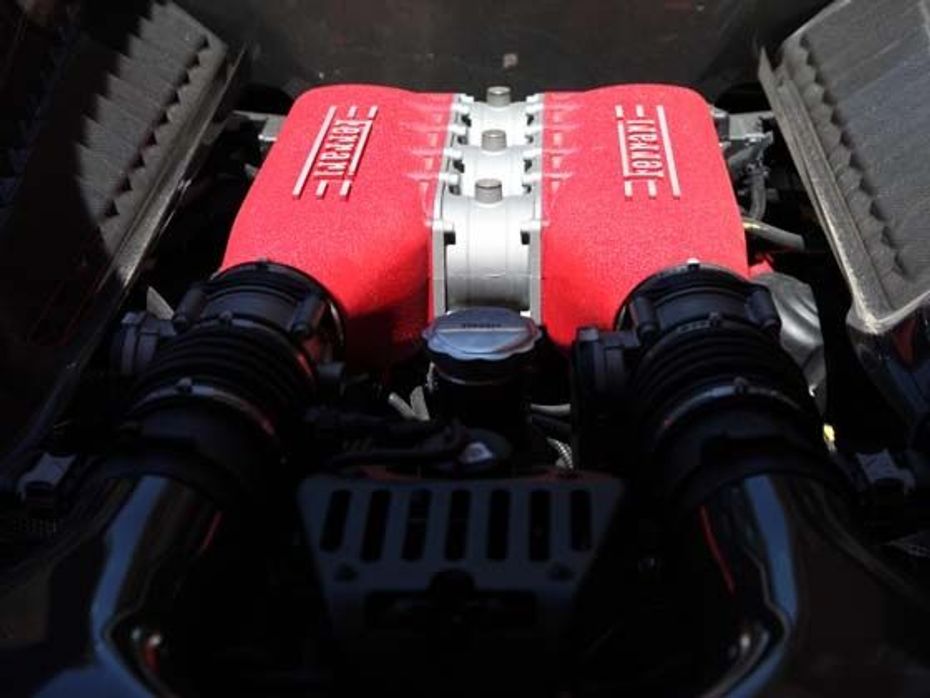
Time then to unravel what Italian joy is all about with apologies to BMW if we have borrowed this phrase! First and foremost the engine because at the heart of any Ferrari is its powerplant. True, the quintessential Prancing Horse has to be a V12 but Ferrari also built its rep on V8s to power its Grand Prix and sports endurance racing machines and this is where we begin to unravel, in these days of engine downsizing, the jewel of a V8 motor that powers the 458 Italia. No one can make a V8 motor sound like the Italians can. Sure, the Germans and Americans can make it rumble and growl like the sound of distant thunder, but when it comes to making it sing in operatic tone and tenor without forsaking the melody, you’ve got to hand it to the Italians, and Ferrari specifically – a case in point being the 4499cc direct-injection V8 engine in the 458 Italia. It is of course one thing to hear this car’s delectable wail when it passes you by, but to hear it just inches away from your ears all by the simple means of pressing the right foot on the throttle pedal to build up this musical crescendo is another thing altogether. With this gem of an engine, one that was voted as the 2011 Performance Engine of the Year no less, resting just a few inches behind the hip hugging bucket seat, and ready to scream its way to a heady 9,000rpm at the twitch of your foot, is an experience that is quite simply unmatched, even by other wild beasts with four wheels and mid-mounted engines.
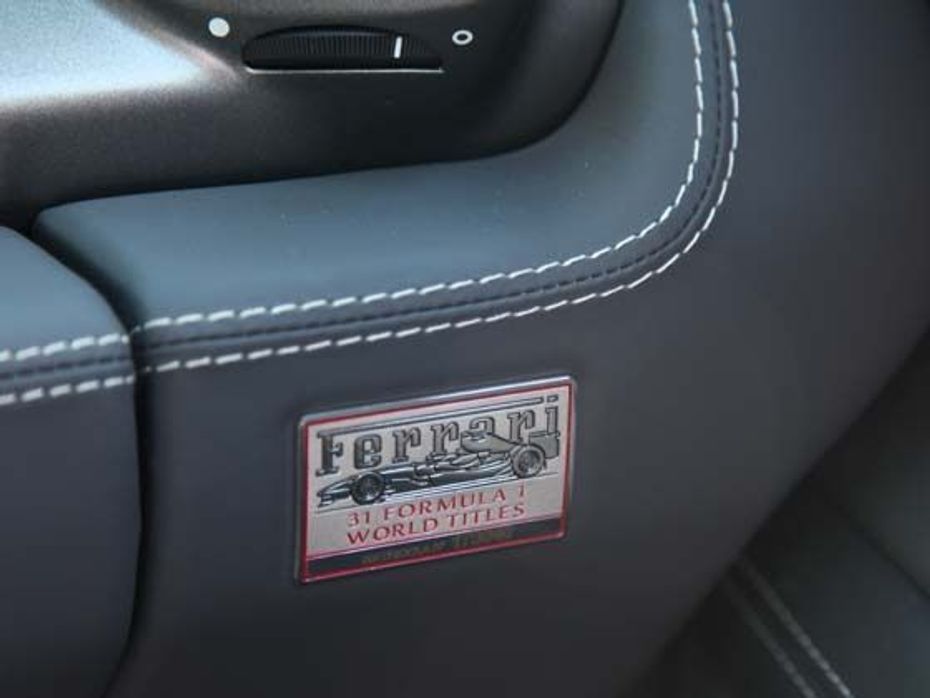
But unmatched it would be, for the Ferrari 458 Italia really is a pretty special car, less a car and more a wild animal. And the engine that powers this beast is also a rather unique creation. Forged from decades of Formula 1 experience and sprinkled with what can only be pure magic, this 4.5-litre 90-degree motor was built all-new from the ground up and sets many new benchmarks. For one thing, with a monstrous power output of 570PS, this engine manages a specific output of 127PS per litre of displacement, making it the highest for a naturally aspirated road car. And the torque figures are no less impressive either – a stomach-churning 540Nm, 80 per cent which is available from 3,250rpm ensures unparalleled drivability at any engine speeds, and the specific torque figure of 120Nm per litre also sets new standards amongst performance cars.
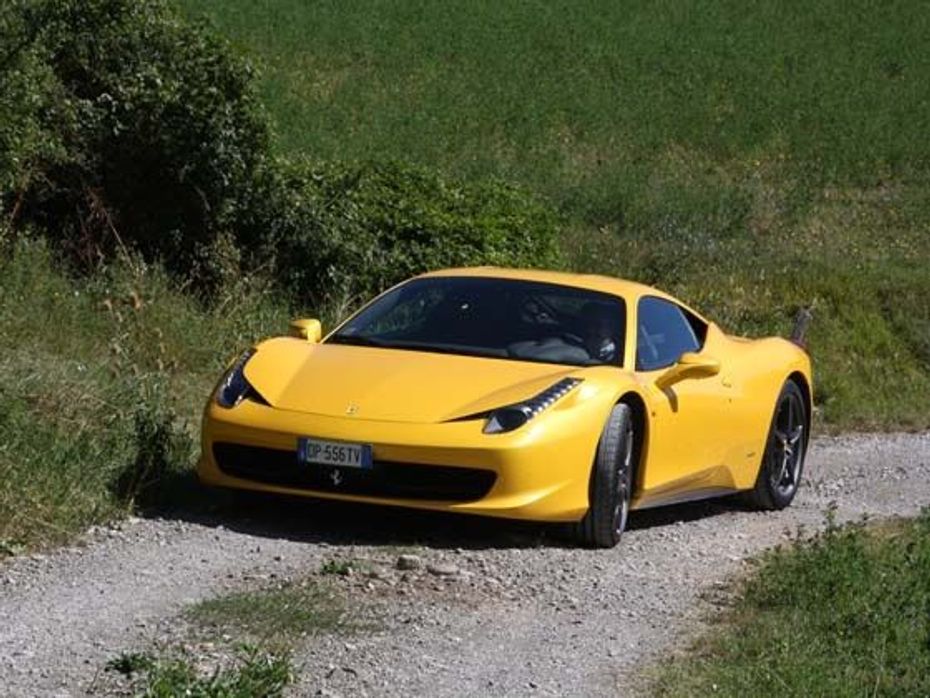
To achieve these sorts of figures is no mean feat and digs deep into the art of developing championship winning Formula 1 engines that Ferrari has mastered for a great many years. To get the maximum out of the powerplant, Ferrari has made use of direct split petrol injection which modulates the fuel injection process into two phases, which significantly improves not just the combustion efficiency, but also the amount of torque available at low revs and reduces fuel consumption in the process. As is traditional for Ferrari engines, the new V8 is equipped with continuously variable timing on both inlet and exhaust camshafts and the engine’s electronic brain is mapped for four different configurations of valve actuation for optimum torque values at all revs. Of course, an engine that can spin so easily to 9,000rpm also needs a lubrication system that can cope with such ridiculously high engine speeds and for this reason, a dry sump oil delivery system was chosen for the task. Four separate oil pumps located in the cylinder block, two in the head and two near the crankshaft scavenge oil from every nook and cranny of the engine and ensure that it is circulated to every part of the block which needs cooling.
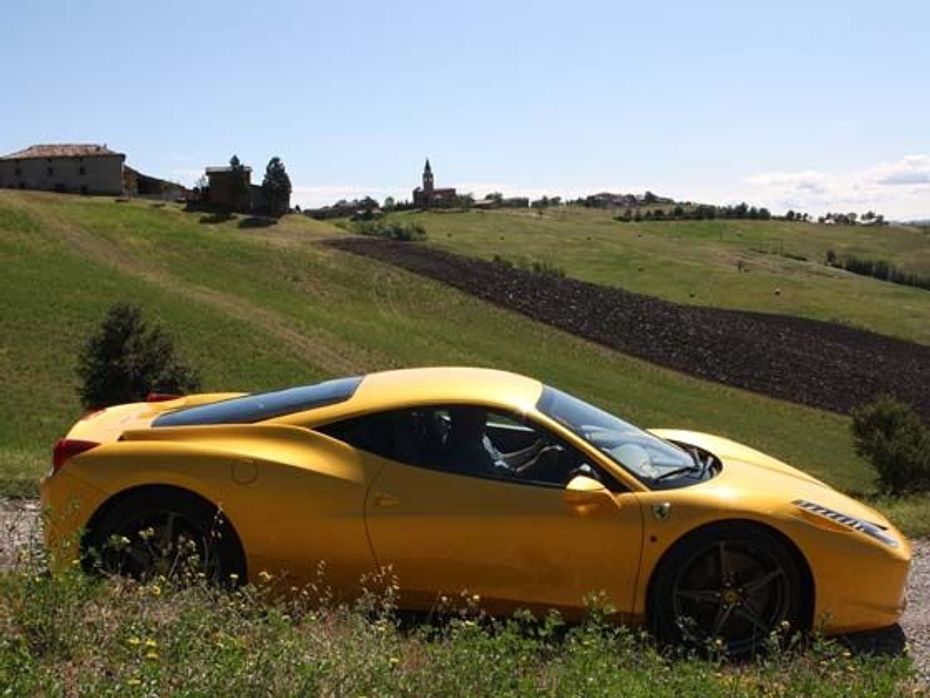
All this techno-wizardry ensures that the 458 can respond instantly at the merest touch of the throttle and provides the kind of precision driving jollies that most other sportscar drivers can just dream about. But engine response is just one part of the equation. The vital link between the power delivered at the crankshaft, to it being sent to the back wheels, is the 458’s specially designed gearbox. For the first time in Ferrari road car history, this is a car that was designed ground up around a dual-clutch automatic gearbox, with an option for manual not even making it into the reckoning! The 7-speed F1 ’box on the Italia independently manages even and odd gears which are pre-selected using two separate input shafts and can change over from one input shaft to the other in virtually no time, effectively resulting in lightning quick gear shifts. Rapid shift times ensure that there is no drop in torque when changing through the gears and the 458 always has the power it needs to shoot out of corners when you step on the gas. The F1 gearbox also integrates one of the 458’s party pieces – the electronic rear differential aptly dubbed as the E-Diff.
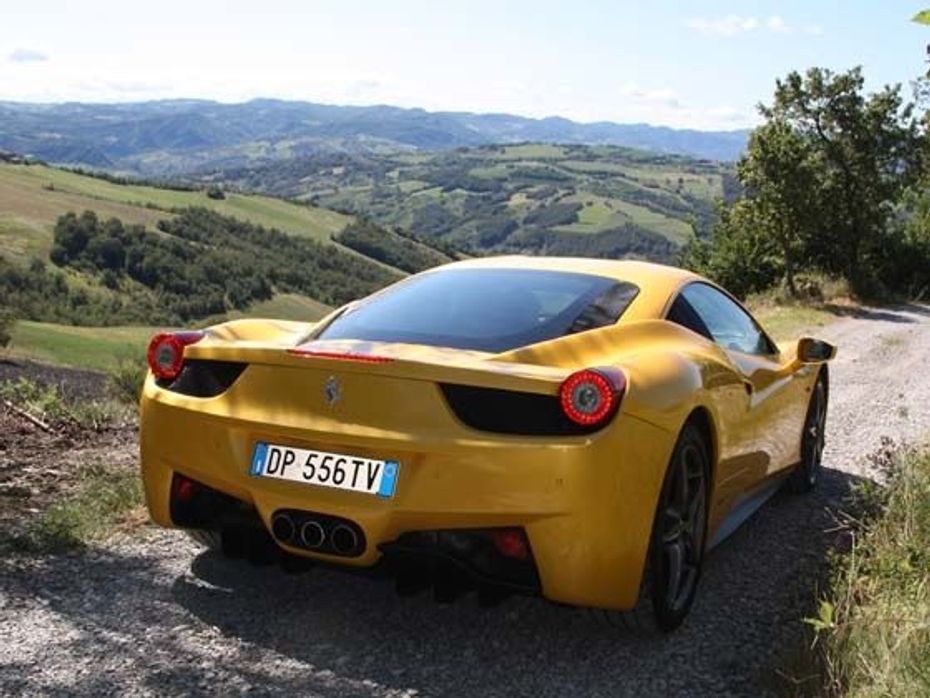
The car’s electronic brain, the ECU, hosts two vital software programmes, the E-Diff and F1-Trac traction control system, which give the Italia its mind-bending abilities. The electronic differential monitors individual rotational speeds of the rear wheels and distributes the engine’s torque appropriately to each wheel in order to keep the car on the straight and narrow, whether it is while entering a corner with the throttle off, or exiting one with the throttle buried into the floor. The E-Diff programme works closely with the F1-Trac system which in itself is keeping a close eye on the availability of traction, or the lack of it, at all times. Flick the manettino switch on the steering wheel into either Sport or Race mode, and the 458 can automatically adjust all parameters such as torque split, throttle response and a plethora of other settings to deliver the best possible lap time and the most progressive handling while on the limit. So while the electronics can transform Average Joe into Michael Schumacher, oops, make that Fernando Alonso for obvious reasons, the really brave Alonsos of the world can just flick the manettino into CT Off or CST Off mode to switch off all the electronic guardian angels in favour of their right foot being the traction control system and also doing the talking.
Astounding as it might be, the electronics package isn’t the only thing that endows the 458 with its exceptional agility around the bends. The car’s chassis is the epitome of pristine balance. Like a world class ballet dancer, the 458 combines raw strength with graceful nimbleness in a way like none other. Aircraft grade aluminium alloys bonded together using innovative manufacturing processes result in a chassis which has exceptional torsional rigidity, almost 15 per cent more when compared to the 458’s predecessor, the F430. Even the 458’s front suspension employs a new double wishbone set-up which was designed to provide greater longitudinal flexibility, which resulted in an improvement in the car’s ability not only to absorb bumps, but to also reduce suspension noise to a great degree. To top it off, the increased vertical rigidity has greatly improved handling and reduced body roll while cornering.
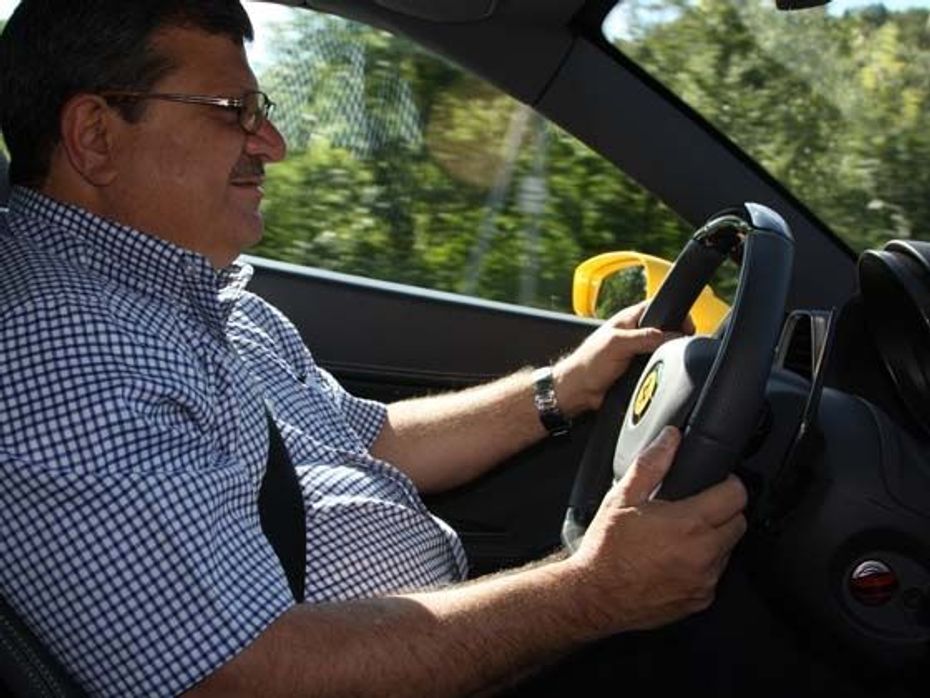
But the real piece de resistance of the 458’s chassis is the latest, second generation of the Magnetorheological Suspension Control shock absorber system. This system, which had originally debuted on the 599 GTB Fiorano basically electronically controls the rigidity of the suspension dampers. These dampers are filled with a magnetorheological fluid which is a sort of smart fluid which reacts to magnetic fields. Magnetic particles in the fluid change their orientation when subjected to a directional magnetic field, thereby changing the viscosity of the fluid which in turn affects the rigidity of the dampers. The 458’s ECU can detect a bump and can change the damping settings in an unbelievably scant eight milliseconds, so the car can automatically adjust itself to absorb the forces of the bump well before the driver even feels the effects!
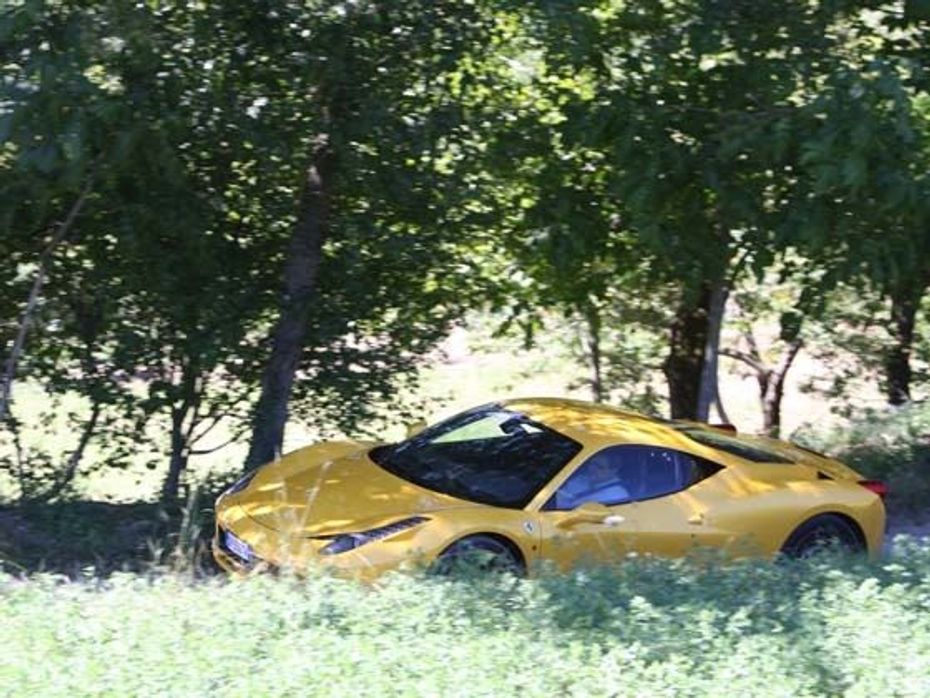
But a car that goes like stink also needs to stop in the same manner and for just this task, the 458 features Brembo carbon-ceramic brakes of ridiculous proportions - 398mm dia rotors at the front are grabbed by 6-pot aluminium calipers while 4-pot aluminium calipers do the same for the 360mm dia discs on the rear wheels. The 458 Italia boasts outstanding braking distances thanks to the development and optimisation of the Bosch control logic and the evolution of Ferrari’s Pre-Fill logic, which reduces response times by activating the pistons in the calipers, thus minimising the gap between the brake pad and the disc as soon as the driver gets his foot off the throttle. The ABS control system is tied into the E-Diff system to ensure that it receives the most accurate estimate of vehicle speed and also allows the ABS to work in conjunction with the traction control system to provide optimal grip levels in all situations.
If the mechanicals don’t get you then surely the style will, which is all Latino grace with subtle sensuality worked in by Pininfarina. This Ferrari mid-engined supercar breaks new ground in that it manages to use aerodynamics sans overt appendages – no outrageous wings or spoilers but just cleverly worked surfaces to cheat drag while enhancing air flow (over, around and underneath the car) to help it scythe through to its 325km/h top speed. Much of the lessons learnt in F1 have been directly translated on to the external form of the 458 Italia to endow it with a co-efficient of drag measuring just 0.330. What this gobbledygook means in layman’s language is ground hugging downforce which helps pin the car to the ground while yet having enough to make it hurtle from rest to a trillion miles per hour in a matter of seconds. The Ferrari aero boffins informed me that 140kg of downforce is produced at 200km/h while at max velocity – 325km/h, the car having 360kg working on it to keep it glued to terra firma!
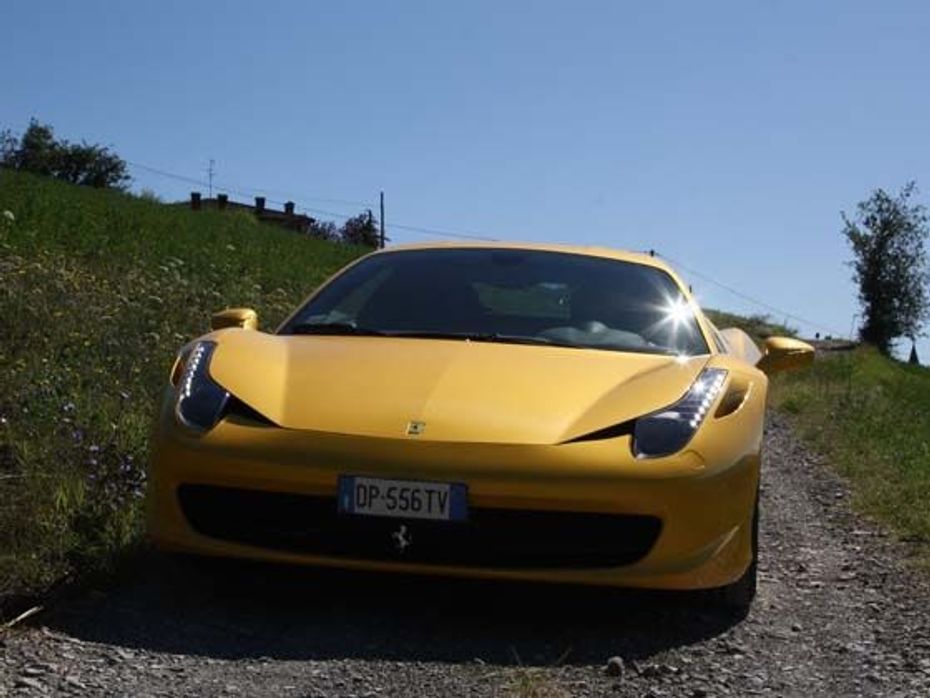
A couple of intricate details did catch my eye and the first of these was the flexible front winglets in the nose which thanks to its material make-up can deform at high speeds to reduce drag while yet channeling air to the radiators and brake cooling ducts. The shape of the trailing edge of the front wheel arch is another subtle hint in easing the air flow, while the side diffusers around the front bumper help the air management. Cleverly integrated transmission radiators make do as lip spoilers on the sweeping rear end while the rear diffuser and underbody is a more refined makeover of the same from the 458’s predecessor, the F430. Another fine detail is the three-prong tailpipe combo peeking through just beneath the number plate base. And of course there is the glass cowl on the rear where you get to see the top end of the magnificent V8 motor in all its glory! Nothing stirs the imagination than seeing the finished-in-red crackle painted plenum chambers feeding the dual banks of four cylinders each.
It’s one thing to know what goes on behind the scenes of this supercar, but it’s another thing altogether to actually experience the thrill of driving one. And what better place to get behind the wheel of a 458 Italia than the hills around the place where this exceptional machine is hand crafted, Maranello? Open the door and you are dazzled by the all-new driver focused interior which is so refreshing that it has immediately inspired so many other supercar rivals to adopt it as the template for their own new models. Said to have been designed completely by Ferrari’s then design chief Donato Coco, the new layout of the majority of the controls are all on the steering wheel and behind it while the sidepods on either side have ancillary switches for various functions. This new “revolutionary ergonomic interface” in Ferrari-speak so to say, means that the driver doesn’t have to move his hands away from the steering wheel, letting him have complete control in the safest manner possible.

With there being no gear lever (one works the transmission via the long elongated paddles just behind the steering wheel) and no transmission tunnel, the cabin of the 458 Italia is competently large and comfortable for its two occupants. One may well ask how one engages reverse gear and for this fly-by-wire actuated gearbox, you only have to push the button marked ‘R’ on the bottom of the dash plate to engage reverse. Every bit of the interior is brilliantly outfitted and detailed. The plush all-adjustable seats which came in my test car were both luxurious, comfortable and kept me from bouncing around – just the bit you want in a car that can change direction with alacrity and also have grip that will deliver mind-numbing g-forces for all this action can, and does, happen at high speeds and you definitely don’t want to be bouncing around in the cockpit!
There is no transmission snatch or any fuss when you pull in the right paddle and engage first gear and begin motoring. There is a seamless surge as you caress the throttle pedal and the car climbs the slight slope up driveway on via Abetone 12. From there on, one drives through the narrow streets of Maranello before hitting the hills in the Emilia Romagna region. This is fabulous driving country and god made it that way because here is where the legendary handling and performance characteristics of countless Ferraris, Maseratis, Lamborghinis and many other lesser known high performance cars from other marques have been honed in anger. It is a place where road and machine are in sync with each other and there is something in the air where the police are known to turn the other way when they see a muletta or prototype mule being flogged by its testers.
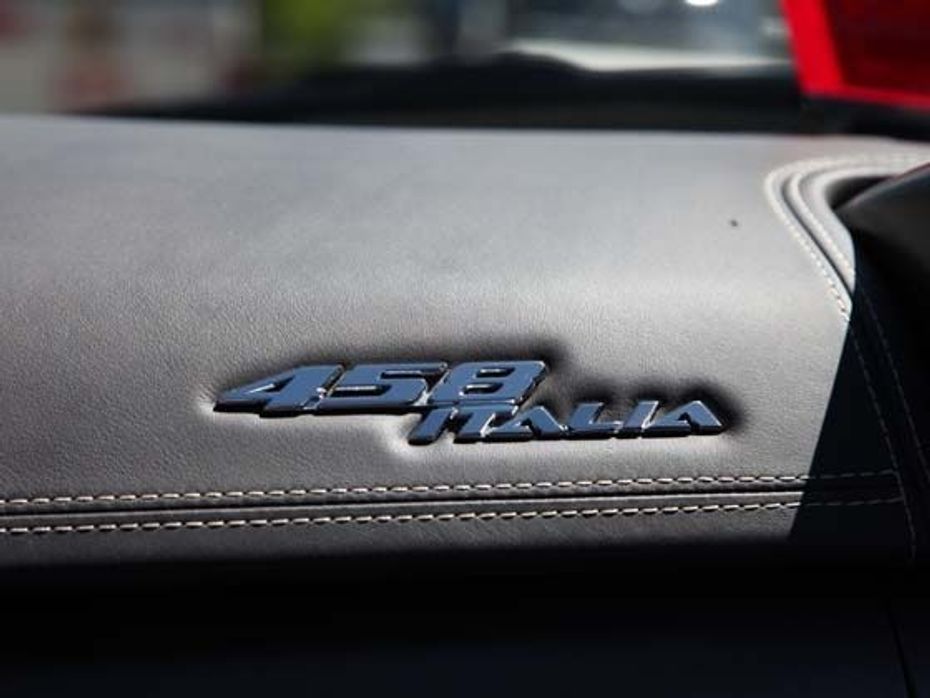
Natural habitat then, for the 458 Italia to strut its stuff! And she sure does so overwhelmingly. By this I don’t mean throwing performance figures at you and sundry but to enlighten how terrific it is in everyday mode. Docile and well behaved like an obedient puppy, with nary a hint of the temperamental and keeping all those thoroughbred horses quiet in such dignified manner is stupendous to say the least. The all pervading electronics which work behind the scenes make the torque do the talking and with a deliciously easy gait the 458 just glides through with nary a fuss or act the prima donna.
Head out of town and direct it on to a clear section of road with fast sweepers or slow uphill corners and tight corkscrew turns, and the 458 unleashes its inner self in a jiffy. It is not, I repeat again, about the absolute power but the immense surge of torque which hurls this car nicely enough to inspire supreme confidence to the man behind the wheel in that there is prodigious grip and a deft precise steering to nail every corner and on more than one occasion to straight line a series of turns. It is magical the way this Ferrari goes about sprinting its way from corner to corner but once you hit long stretches where minimal steering input (of say 10 degrees from the perpendicular on either side of the steering wheel) is needed, the joy of going through the 7-speed DCT gearbox is sheer pleasure. The glorious wail of the V8 is more often than not drowned by loud whoops of delight from within the cockpit itself and then you hear the engine change its note, for the better, as the flaps in the exhausts open up and then there is music of altogether a different kind. The exhaust notes combine with the hill sides to reverberate in a medley of their own and then rasp in mild anger under downshifts before swooning in delight as you nail that accelerator hard again. One can do this all day long and I am sure you’ll want to play these tracks over and over again.
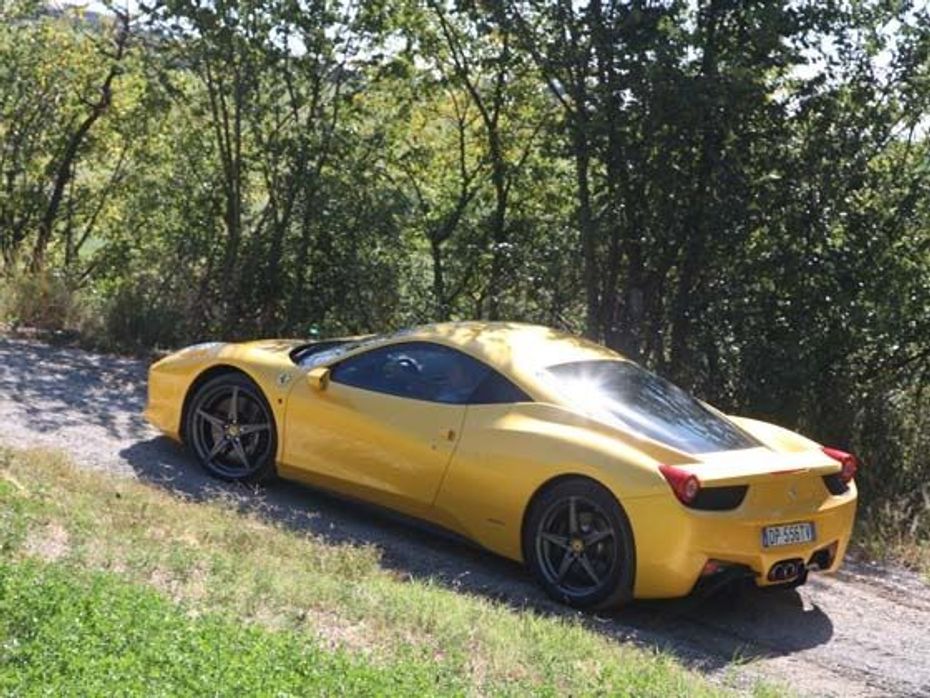
What is undeniable is the tractability even under full power, the rear end never getting out of sync. The clever electronics massage and modulate the power and torque from upsetting not just the overall balance of the machine but also keep it pointed in the direction intended so that forward mobility is always fast but safe. The quick shifting gearbox is brilliant though to be truthful, only a clear cut comparison on the same day between this car and its rivals can illustrate if there is anything lesser to be said about it. Quite simple to understand why this is so because one Michael Schumacher played a large role in developing the drive and the ride and handling characteristics for what is in essence the pinnacle of modern day supercars sporting the Prancing Horse logo.
Performance figures are academic but need mentioning. Zero to 100km/h comes up in the blink of an eye, in 3.4 seconds, while 0 to 200km/h is achieved in a mouth-watering 10.4 seconds! The way the car goes through the gears is reward enough but then 325km/h is fair return at the top end. To do so much with a naturally aspirated 4/5-litre V8 engine is one thing but then this also works in the sheer silky power delivery which one can exploit across the rev range with the slightest dab on the loud pedal. The relentless surge of torque from as low down as 3000rpm is key to those smiles being plastered on yours truly’s lips and it is only the sense of occasion on the outside which makes this such a surreal experience.
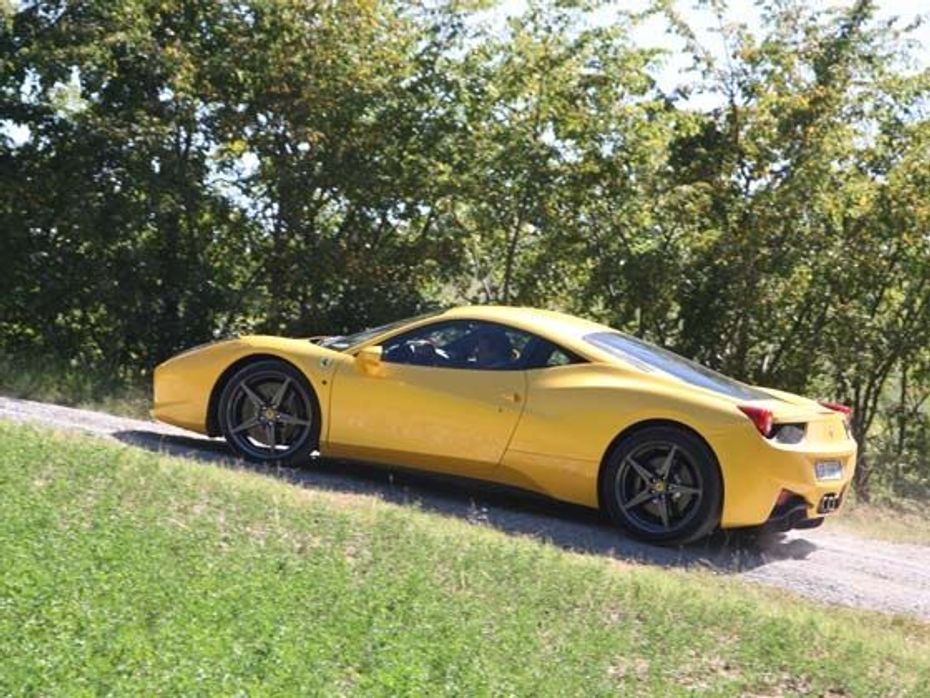
The poise and the tactility from the steering wheel means that the car is so live and telepathic in its feedback. The suspension, the taut chassis, the mind-numbing weight distribution, its low all-up weight 1380kg (dry) and those large 20-inch Pirelli P-Zeros deliver a supple ride when you want it, stiffening up in as quick yet progressive a manner when you want it to chase raging bulls. And then there are those large ceramic disc brakes, surely the best piece of kit to have on this car with such effortless forward thrust at its command. The same effortless weight distribution plus the slightly lengthened wheelbase compared to the 458 Italia’s predecessor, the F430 sees the car scrub off speed with finesse and aplomb. When you drop the anchors from 200km/h, the car comes to a standstill in 128 metres and if done from half that velocity the distance to rest is just 32.5 metres! This baby can tango with the best of them and yet pirouette to a stop on a penny! Brilliant.
Another aspect of the 458 bears mention and that is its tremendous all-round visibility. Supercars do have inherent blind spots, noticeably at the rear corners. With fast straight ahead mobility being the raison d’etre of this genre of automobile, the 458 Italia’s tallish front windshield gives a clear and larger than normal peripheral vision to its pilot and this is a bonus given the easy controllability of the car and its terrific performance which is always on tap waiting to explode. Hell, the drive up and around Modena was over before I even knew it and this had to be the quickest five hours of my life, vanishing into oblivion faster than even the 458’s stunning acceleration!

Of course there was no time to measure mundane details like fuel consumption and such, (if you do that, goes the adage, you just can’t afford it1) but going through the comprehensive tech specs, I go to know that this car has been rated at doing 100km using 13.3 litres of 98 octane and at this rate the downsized fuel tank gives it an operational range of 540km – just right to do the Mumbai-Goa run on an 86-litre tankful and maybe in under seven to eight hours! If that’s not all, the Ferrari engine team has further reduced the car’s tail pipe emissions measurably and for a supercar with its eight and performance potential, it emits a class leading low emissions count of 307 grams of CO2 per kilometre!
All good things must come to an end but while I had to control my emotions when it came time to handing the car keys back to the ever smiling Ferrari product communications lady, the silly grin on my face told her everything. No wonder she went all around the 458 sitting in the driveway to see whether it had been boyishly handled and then she returned the smile, more in relief that the car had come back safe and unmarked than anything else. Heck, boys will be boys and nannies will be nannies but to say that the 458 made a profound impact would be a massive understatement. It did worse than that; it made every other drive from that day on seem so insipid!

Mahindra BE 6e First Drive Review: Pure Insanity!

2024 Maruti Dzire Review: Playing It Safe

2024 Honda Amaze Review: Predictable Is Good
 Mahindra BE 6
Mahindra BE 6
 Maruti Dzire
Maruti Dzire
 Royal Enfield Classic 350
Royal Enfield Classic 350
 Yamaha MT 15 V2.0
Yamaha MT 15 V2.0
 Honda Amaze
Honda Amaze
India's largest automotive community
 Maruti Brezza
Rs. 8.34 Lakh
Maruti Brezza
Rs. 8.34 Lakh
 Maruti FRONX
Rs. 7.51 Lakh
Maruti FRONX
Rs. 7.51 Lakh
 Maruti Grand Vitara
Rs. 10.99 Lakh
Maruti Grand Vitara
Rs. 10.99 Lakh
 Tata Curvv
Rs. 9.99 Lakh
Tata Curvv
Rs. 9.99 Lakh
 Mahindra Thar
Rs. 11.34 Lakh
Mahindra Thar
Rs. 11.34 Lakh